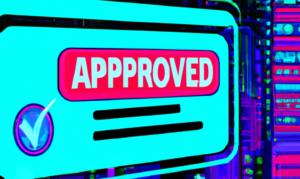For millions of people across the country, getting a mortgage is likely to be the single most important financial decision that an individual or family will make during their lifetime. There is no lack of horror or success stories surrounding home mortgages, so it’s completely understandable if you’re concerned about making the right decision.
Definition of APR
APR stands for annual percentage rate and is the annual rate that you’re charged for borrowing a mortgage loan, expressed as a single percentage that represents the actual yearly cost of borrowing over the term of your loan. APR includes your loan’s closing costs and the interest rate that you pay.
While APR should not be the end-all tool for your decision-making, it is a useful reference to gain a broad snapshot of the true cost of your loan.
Not sure how to calculate APR on a loan? As we’re about to see, it’s actually not too difficult to figure out.
How to Calculate APR on a Mortgage Loan
Let me share a method that I advise my clients to use to calculate their APR for a 15-, 20-, or 30-year fixed loan, without the use of the internet, armed only with a simple, everyday calculator. Feel free to use this to impress your friends at your next cocktail party!
“Hacky” APR Calculation Example
| Determine your total closing costs: Lender origination fee Other closing costs | $4,000 + $3,000 = $7,000 |
| Determine the total number of months on your proposed mortgage: | 30 years x 12 month/year = 360 months |
| Divide your total closing costs by the number of months: | 360 ÷ $7,000 = 19.44 |
| Divide the result above by 100: | 19.44 ÷ 100 = 0.1944 |
| Determine your payment interest rate: | 4.00% |
| Add the result from step 4 to the result from step 5: | 4.0000% + 0.1944% = 4.1944% |
| Bingo! This is your estimated APR: | 4.1944% |
APR Is the True Cost of Your Loan
When getting a mortgage, you’ll be quoted an interest rate, which is the cost of actually borrowing the money. For example, a $300,000 loan multiplied by a 4% interest rate costs you $12,000 of interest per year.
But there are additional fees that you’re charged to get a mortgage loan. In the “hacky” example above, you’ll notice $4,000 in origination fees and $3,000 in closing costs. When you combine these total closing costs with the interest rate you pay, you’ll come up with an APR that’s the true annual cost of your loan.
Use an APR Calculator
The above “hacky” example only estimates your APR reliably for fixed loans that are between 15 and 30 years in length. To accurately determine your APR for other kinds of loans, you’ll need to perform some relatively complicated math. Fortunately, you can use an APR Calculator to easily determine your APR without having to rely on the lender to disclose it.
- Type in your Loan Amount;
- Enter Your Loan Term in months (e.g., 30-year fixed loan x 12 months = 360);
- Type in your quoted Interest Rate (this is the rate that your monthly payments are based on);
- Enter your Finance Charges (total fees charged by your lender);
- The APR calculator will automatically calculate your APR.
askArvin Tip
The federal Truth in Lending Act (TILA) requires that your lender disclose important terms of credit—like your APR—for the real estate mortgage you applied for. Additionally, the TILA will include your finance charges to be paid, your monthly payment, and whether you can repay your loan early without a penalty.
A Mortgage Loan Is More Than Just APR
Getting caught up in the whole mortgage APR thing can seem a bit overwhelming, to say the least. APR is a useful tool when shopping for mortgage lenders. However, keep in mind that the fees that lenders use to calculate your APR can vary. So, while APR is an important number to consider when getting a mortgage loan, it shouldn’t be the only number you rely on for your decision-making.
Remember that your monthly mortgage payments are only based on the interest rate quoted and not on the APR. To get a complete picture of your mortgage costs, make sure to review your Loan Estimate (LE), which will show you the interest rate and an estimate of all the closing costs required for your loan.






